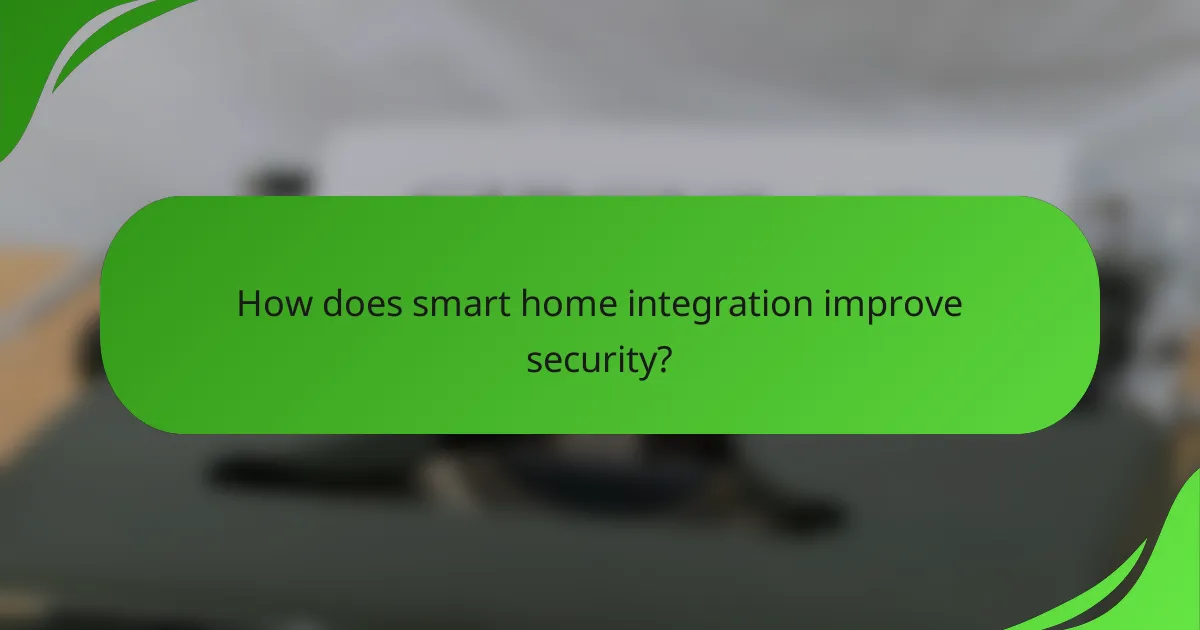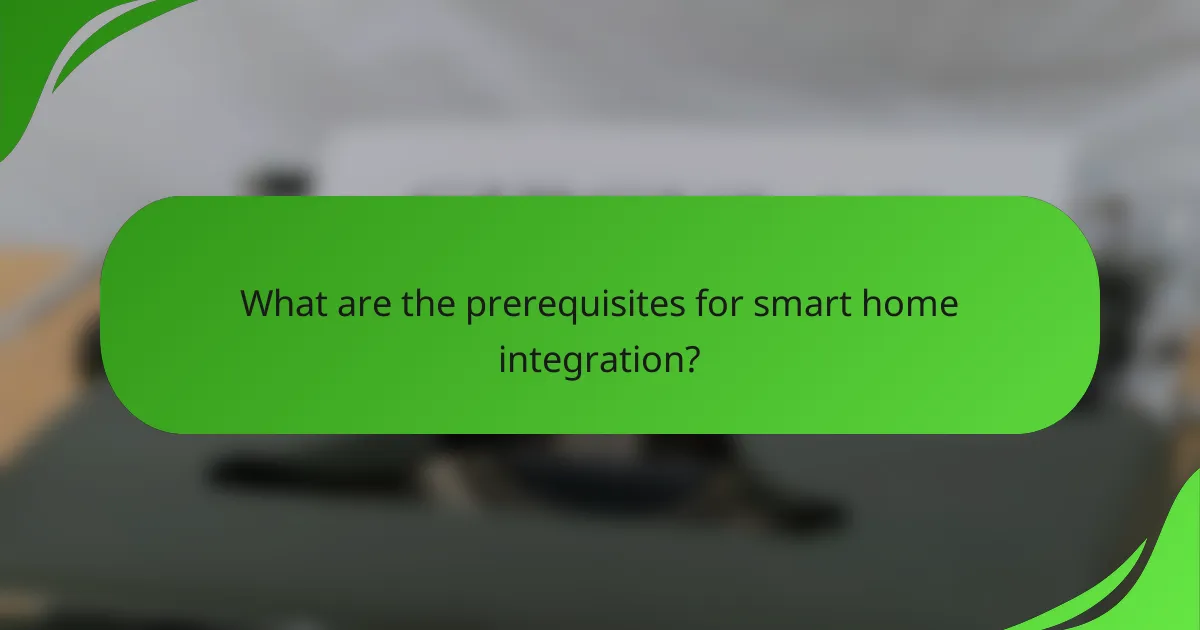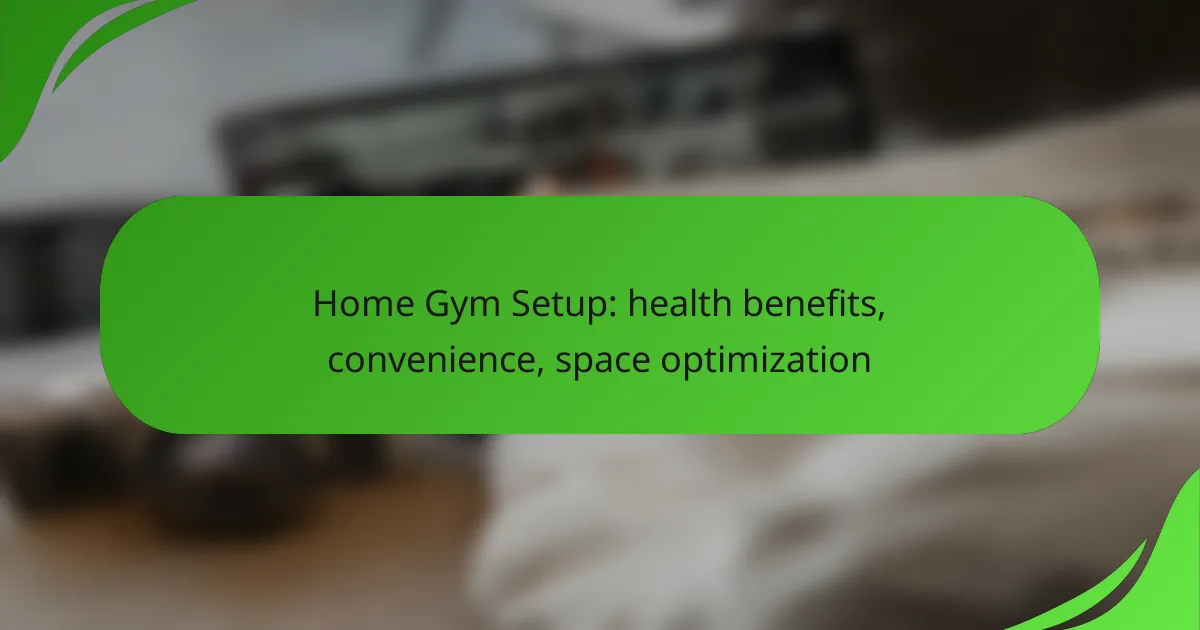Smart home integration revolutionizes daily living by combining convenience, energy efficiency, and enhanced security into a cohesive system. By automating tasks and allowing centralized control of devices, homeowners can streamline their routines while optimizing energy usage and reducing costs. Additionally, advanced security features provide real-time monitoring and alerts, ensuring peace of mind and protection against potential threats.

How does smart home integration enhance convenience?
Smart home integration enhances convenience by automating everyday tasks, allowing users to control various devices from a single interface. This technology streamlines routines, reduces manual effort, and can be tailored to individual preferences.
Automated lighting systems
Automated lighting systems adjust brightness and color based on time of day or occupancy, providing tailored illumination without manual switches. For instance, lights can turn on automatically when you enter a room or dim in the evening to create a relaxing atmosphere.
Consider systems that allow for scheduling and remote control via smartphone apps. This can lead to energy savings and improved security, as lights can simulate occupancy when you are away.
Smart thermostats
Smart thermostats learn your heating and cooling preferences, adjusting temperatures automatically to enhance comfort and save energy. They can be programmed to lower heating when you’re not home or adjust cooling based on real-time weather data.
Many models offer energy usage reports, helping you understand consumption patterns. Look for features like geofencing, which adjusts the temperature based on your location, ensuring comfort upon arrival without wasting energy.
Voice-controlled assistants
Voice-controlled assistants enable hands-free operation of various smart devices, enhancing convenience in daily tasks. You can control lights, thermostats, and even appliances simply by speaking commands, which is especially useful when your hands are full.
Choose an assistant that integrates well with your existing smart devices for seamless operation. Be mindful of privacy settings and ensure your network is secure to protect your personal information while using these technologies.

What are the energy savings from smart home integration?
Smart home integration can lead to significant energy savings by optimizing the use of energy-efficient devices and automating energy management. Homeowners can expect reductions in utility bills through better monitoring and control of their energy consumption.
Energy-efficient appliances
Energy-efficient appliances are designed to use less energy while providing the same level of performance. These appliances often carry labels such as ENERGY STAR, which indicates they meet strict efficiency guidelines set by the U.S. Environmental Protection Agency or similar organizations in other countries.
When integrating these appliances into a smart home system, users can further enhance savings by scheduling usage during off-peak hours or when renewable energy sources are available. This can lead to savings of 10-50% on energy costs compared to traditional appliances.
Smart energy monitoring
Smart energy monitoring systems provide real-time insights into energy consumption, allowing homeowners to identify which devices use the most power. These systems can track usage patterns and help users make informed decisions about their energy habits.
Many smart meters and energy monitors can be accessed via mobile apps, enabling users to adjust settings remotely. By understanding their consumption, homeowners can reduce waste and potentially save 5-15% on their monthly energy bills.
Automated energy management
Automated energy management systems use smart technology to optimize energy usage throughout the home. This includes features like smart thermostats that adjust heating and cooling based on occupancy and preferences, as well as automated lighting systems that turn off when rooms are unoccupied.
By implementing these systems, homeowners can achieve further energy savings, often in the range of 10-30%. Regularly reviewing and adjusting settings based on seasonal changes and personal habits can maximize these benefits.

How does smart home integration improve security?
Smart home integration enhances security by providing real-time monitoring, remote access, and automated alerts, making it easier to protect your home. These technologies work together to deter intruders and respond quickly to potential threats.
Smart security cameras
Smart security cameras allow homeowners to monitor their property from anywhere using a smartphone or computer. They typically feature high-definition video, night vision, and motion detection, sending alerts when activity is detected. Many models also offer cloud storage options for recorded footage, which can be accessed remotely.
When selecting a smart camera, consider factors such as field of view, resolution, and whether it requires a subscription for cloud services. Brands like Ring and Arlo provide various options to fit different budgets and needs.
Smart locks
Smart locks provide keyless entry to your home, allowing you to control access through your smartphone or a keypad. They can be programmed to grant temporary access to guests or service providers, enhancing convenience and security. Many smart locks also feature alerts that notify you when someone enters or exits your home.
When choosing a smart lock, look for features like remote locking/unlocking, compatibility with your existing door hardware, and battery life. Popular models include August and Schlage, which offer robust security features and user-friendly interfaces.
Home security systems
Home security systems integrate various devices, such as cameras, sensors, and alarms, to provide comprehensive protection. These systems can be monitored remotely and often include features like 24/7 professional monitoring and automated responses to breaches. Many systems can be customized to fit your specific security needs.
When evaluating a home security system, consider installation options (DIY vs. professional), monthly monitoring costs, and compatibility with other smart home devices. Companies like ADT and SimpliSafe offer flexible plans to suit different preferences and budgets.

What are the prerequisites for smart home integration?
To successfully integrate smart home technology, you need compatible devices, a reliable internet connection, and a smart home hub. These elements work together to create a seamless and efficient smart home environment.
Compatible devices
Compatible devices are essential for smart home integration, as they must support the same communication protocols. Common devices include smart lights, thermostats, cameras, and locks, which often connect via Wi-Fi, Zigbee, or Z-Wave.
When selecting devices, ensure they are compatible with your chosen smart home ecosystem, such as Google Home, Amazon Alexa, or Apple HomeKit. This compatibility will allow for easier control and automation of your devices.
Reliable internet connection
A reliable internet connection is crucial for effective smart home integration, as most devices rely on cloud services for functionality. Aim for a broadband connection with a speed of at least 25 Mbps to support multiple devices simultaneously.
Consider using a mesh Wi-Fi system if your home is large or has dead zones. This setup can enhance coverage and ensure that all smart devices maintain a stable connection.
Smart home hub
A smart home hub acts as the central control point for your devices, allowing them to communicate with each other. Hubs can support multiple protocols, enabling devices from different manufacturers to work together seamlessly.
Popular hubs include Samsung SmartThings, Hubitat, and Amazon Echo Plus. When choosing a hub, consider its compatibility with your existing devices and any future devices you may want to add.

What are the best smart home platforms?
The best smart home platforms include Amazon Alexa and Google Home, both of which offer extensive compatibility with various devices and services. These platforms enhance convenience, energy savings, and security through seamless integration of smart devices.
Amazon Alexa
Amazon Alexa is a voice-controlled platform that allows users to manage smart home devices through simple voice commands. It supports a wide range of devices, including lights, thermostats, and security cameras, making it a versatile choice for home automation.
When using Alexa, consider the compatibility of your devices and the ease of setup. Many devices can be controlled through the Alexa app, which provides a user-friendly interface for managing settings and routines. Be mindful of privacy settings, as Alexa continuously listens for commands.
Google Home
Google Home operates similarly to Amazon Alexa, enabling voice control of smart devices and integration with Google services. It excels in providing personalized responses and can manage tasks such as scheduling and reminders alongside device control.
To maximize the benefits of Google Home, ensure your devices are compatible with Google Assistant. The Google Home app allows for easy setup and management of devices, and it offers features like routines to automate multiple actions with a single command. Privacy considerations are also important, so regularly review your settings to maintain control over your data.








